Trey Laird Is Quietly Ruling the Fashion Industry
On orchestrating Tommy x Gigi, his “buddy” Karl Lagerfeld, and how to use social media to tell a story.
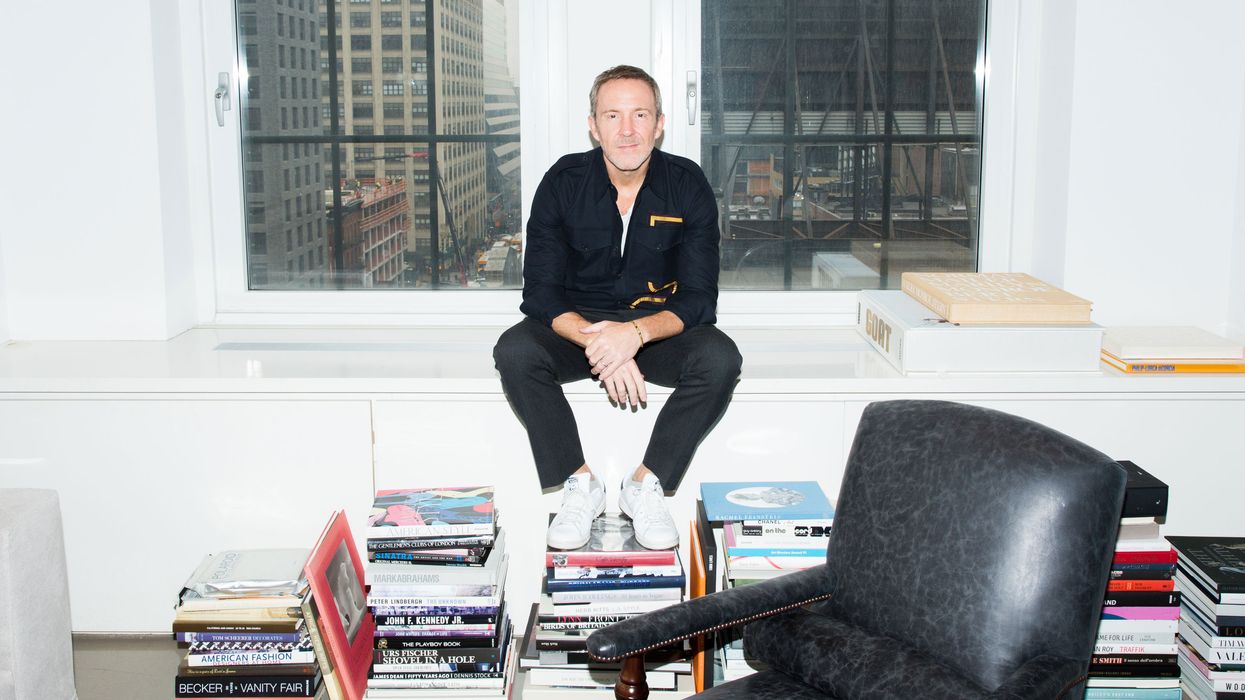
You’d be forgiven for not knowing Trey Laird’s name. Up until (very) recently, he kept a (very) low profile. He only just joined Instagram within the last year and rarely gives interviews, yet he’s behind some of the most memorable, mind-blowing moments in recent fashion memory. In the ’90s he was the creative director at Donna Karan, and helped brand their ads, marketing, and store design.
In 2002, he launched Laird + Partners, a fashion-focused advertising agency, that actually does a lot more than advertising. He works with brands like Tom Ford, Chloé, Belstaff, Coach, Bottega Veneta, Karl Lagerfeld, and Tommy Hilfiger to help create a cohesive brand experience and identity. He’s also the man behind the Tommy Hilfiger x Gigi Hadid collaboration (and the over-the-top carnival-themed spring/summer ’17 runway show), the most memorable Gap ads ever, and dressing Joan Smalls as Pharrell for the CFDA.
This is all a very roundabout way of saying Trey Laird is a BFD. But as LaVar Burton always said, “Don’t take my word for it.” Find out how Laird uses social media to create a cohesive brand identity, why he’s behind some of the most memorable moments in fashion, and what he does to get out of a creative block below (hint: it involves art).
“Art is a big inspiration for me.”
On working with Donna Karan and launching his company:
“I started out at a small boutique advertising agency that worked in fashion, so that sent my career in a more fashion direction. I hadn’t necessarily planned on that, but it’s what I started doing and I really loved it. Then, later I went in-house at Donna Karan in the ’90s and that was a really explosive time for that company. It grew a lot. I became the creative director of Donna Karan. I did all the ads, marketing, and store design, some product categories. It was a great learning experience. I decided in 2002 to do my own thing, so I launched Laird + Partners. I met Mickey Drexler and he asked me to do the Gap ads, and then when I left, Donna said, ‘Well, I still want you to do all of Donna Karan and DKNY.’ I started day one doing Donna Karan and Gap and DKNY, which was great and it kind of grew from there. It’s been 13 years.
“[When I started Laird + Partners,] I was just itching to do something different. I’d been at Donna Karan for a little over ten years and I stated I learned so much, but I wanted to grow. I felt like in fashion there were these really talented art directors that did really beautiful art direction and could make something look really great, and then there are these big ad agencies that had really great concepts and strategic skills, or a conceptual side to it—but it didn’t look so great. Some of the art direction and stuff would look really great but there wasn’t necessarily a bigger strategy or a bigger idea. So I wanted to try and see if I could merge those two things and have something smart and clever and conceptual and strategic and idea-driven, but had a visual sophistication and a look that was right for the fashion world.”
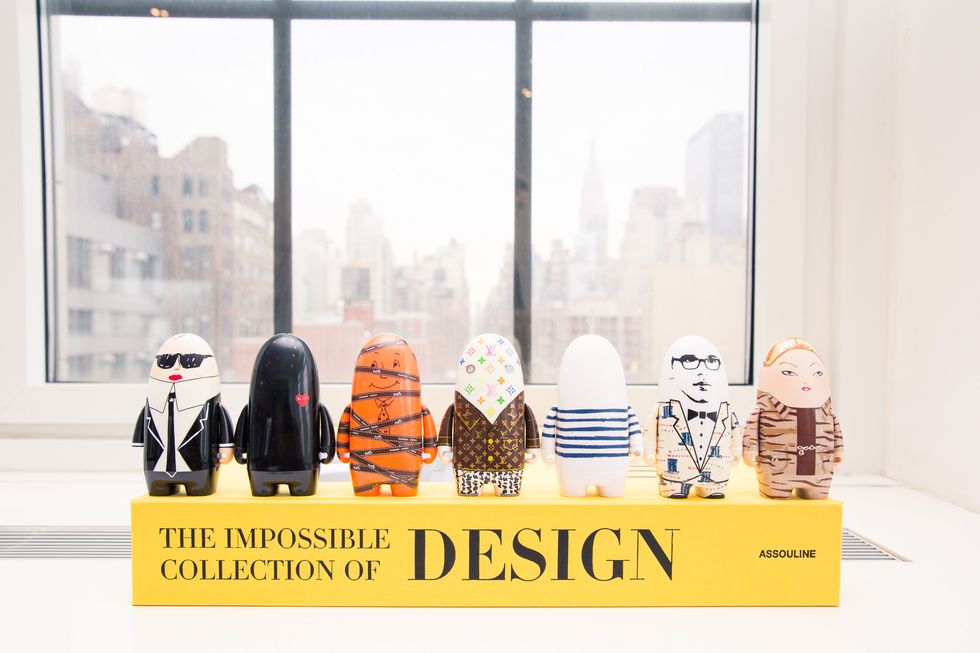
So what do they actually do?:
“I don’t think of us as an ad agency. I mean, we do advertising every day, but what we’re about is so much more than advertising. It’s really brand partnerships and being strategic partners to help bring a brand to life in whatever way that is, if it’s an experience, if that’s through social media, if that’s product itself, if that’s a design collaboration, if that’s understanding your brand codes, and then certainly advertising and marketing and all the creative elements. We really excel when we have tight partnerships and relationships with our clients and brands and work with them across all the different things they do. Advertising is just one little part of that, because you can have cool ads and if the product’s not right or the store’s not right or your social media is not on point, then it doesn’t really matter. It has to kind of send one message and have a point of view.”
How much the branding and advertising world has changed:
“Oh my god, it’s so much more complicated now. I look back and I think, ‘Oh, this used to be so easy.’ At the time you didn’t think it was easy, but up until a few years [ago] you would go do a print campaign. Maybe you had a little bit of a film component, or a behind-the-scenes thing and that was kind of it. You did magazine ads and a billboard. And then there was this new thing called the internet and you start to put a few things out on that.
“Then in the past few years when obviously social media has exploded and how you can connect with people is totally different. This sort of thirst and hunger for content—it's endless.”
“We really excel when we have tight partnerships with our clients and brands, and [when we] work with them across all the different things they do.”
Why he only *just* got on Instagram, and how to use it to tell a story:
“I went kicking and screaming. I think it was one of those things that when you do that for other people all day long, it’s the last thing you want to do for yourself. It’s like one more thing to do. I just never really got around to my own thing, and also it took me a while to figure out how I could [make it from my point of view]. We have a Laird + Partners Instagram, which puts out our work and is really clean and comprehensive from a work point of view, but for my own personal thing—my life is such a mash-up of friends and family and travel and art and work and shoots and design and inspiration, it’s kind of this kooky, crazy mash-up. It makes sense to me, but I didn’t really know how to put it out there in a way that would come together. I decided to do everything in black-and-white and I have little pops of color once in a while, so it’s just my own little take on it. Somehow when I made everything black-and-white, it all kind of came together. If I was with my family or I was on an inspiration trip or I was on a shoot or there was a new piece of work that I wanted to put out—whatever it is—to me somehow it all came together. It took me a while, but I’m there [laughs].”
How he applies the same idea to brands:
“To me, I think of brands like people. They have a personality, they have a voice, they have an attitude, and ways of doing things. You get to know them over time and they evolve and grow. Then you either connect with somebody or you connect with a brand or you don’t. If you’re an Alex Wang person, you’re going to really respond to that type of environment, that type of imagery, product, store, parties, everything that that brand stands for. If you’re a Ralph Lauren person, that’s very, very different. Everything gives you a different sensibility.
“We work with someone like, for instance, Tom Ford and for me it’s a pleasure. It’s always a challenge to do a great job because he pushes us to do great work, which I love. It’s always a challenge to constantly evolve, but what’s easy is Tom’s got such a clear point of view. He knows exactly what he likes, he knows exactly what he wants to do, and so I really then just help enable that vision to come to life. He’s so clear and has such a clear, strong, pure vision. There are other people we’ve worked with, they’re not so sure and they don’t feel so confident, and those things are real challenges because ultimately you can’t ever really tell someone exactly who they are and what they believe in. You can help them and give them tools and give them ideas and inspire them, but that’s when it’s at its best and its strongest and the easiest and when it’s challenging.”
“I think of brands like people. They have a personality, they have a voice, they have an attitude, and ways of doing things.”
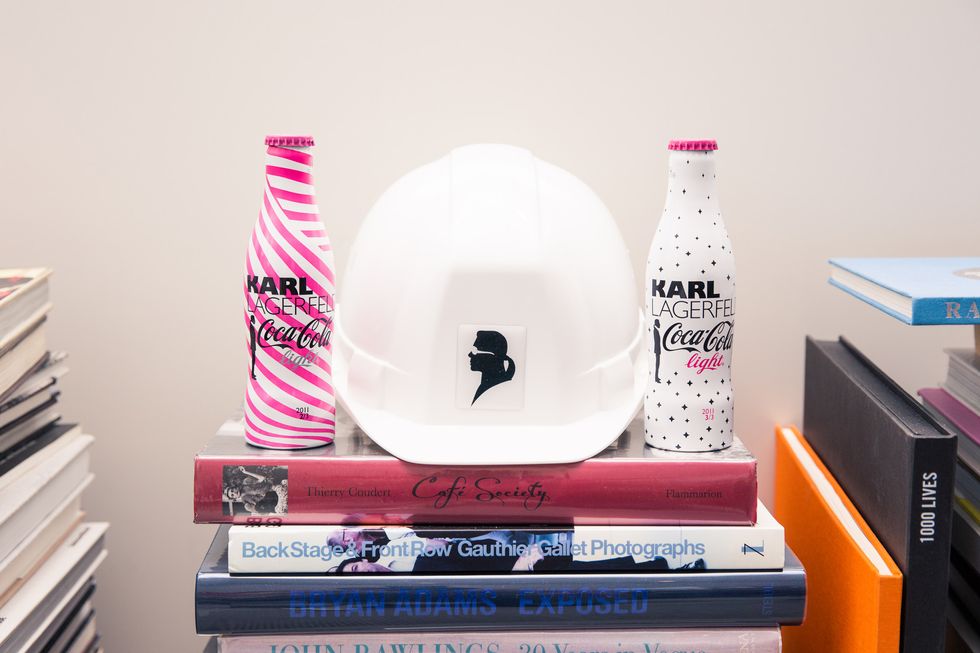
On working with his “buddy” Karl Lagerfeld:
“It started about five years ago. Karl was relaunching his brand as a contemporary accessories-focused brand with both a digital e-commerce as well as a freestanding store component, and really wanted to look at the brand in a new way. But talk about somebody who has got a point of view and a vision.
“It was incredibly inspiring because there’s so much there to work with. He’s an endless source of inspiration and creativity and ideas and he knows everything about everything. There’s no subject at all that you can talk about that Karl is not already an authority on, or interested in, or has just read about, or just met somebody [who is an expert in that subject]... It can be skateboarding or Japanese graffiti or 18th century lace or whatever it is, or he’ll go in his library and pull out the book on 18th century lace and is like, ‘Oh, did you know, blah blah blah.’ That’s always kept us on our toes and it’s been great. We worked with him on his campaigns, logos, brand, marketing, and store design. It’s been a great collaboration and a great experience to know him. It’s a real honor.”
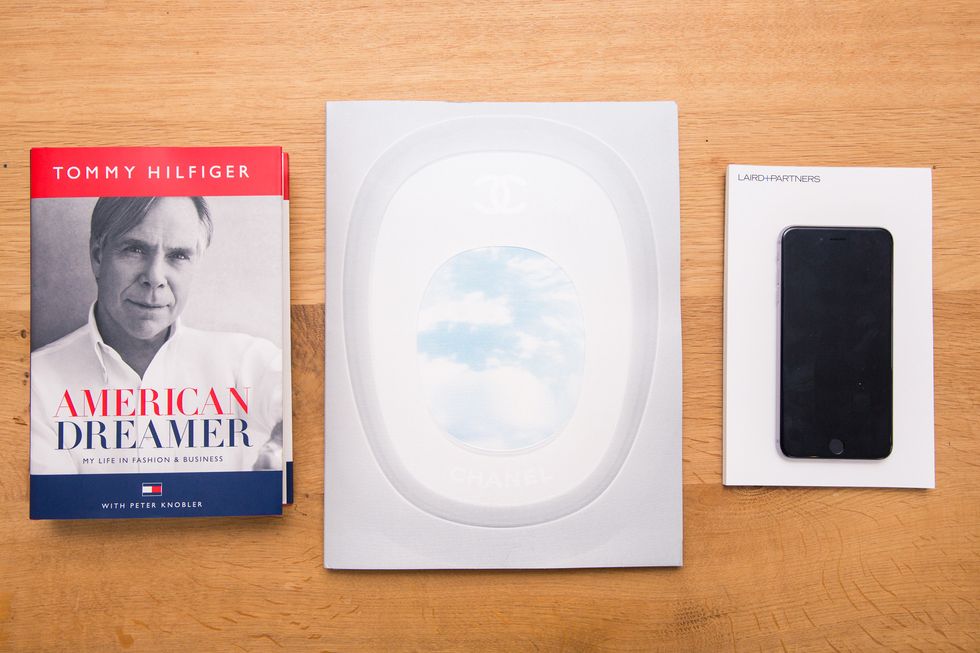
“[Gigi is] unapologetic about who she is and what she loves. She puts what she’s all about out there. She stands up for herself.”
How Tommy x Gigi (yes, *that* Gigi) came about:
“I first met Gigi on a Tom Ford Fragrance campaign a couple of years ago for Velvet Orchid. We shot it with Mario Sorrenti, and Gigi had just turned 18. She was this amazing, voluptuous American icon in the making. She was brand-new, but there was something about her that stuck with me.
“About a year or so later we were working on a new Tommy Hilfiger campaign and Tommy has always been known as such a men’s brand, but it has a strong women’s business. It needed something that could be a symbol of what Tommy believed in for women. Gigi was the new American dream girl. From California, blonde, positive, optimistic, sporty, has her own attitude, does things her own way, fun, so I just felt there was something about her that she could represent Tommy, and Tommy really loved her as well. We went to her and said, ‘Why don’t we work on something bigger. We’d love for you to be a part of the campaigns, but in a way that’s more interesting—would you like to collaborate on product?’ She was really into it, so we started this partnership.”
What makes Gigi *Gigi*:
“I’ve just done all these focus groups across the country, and we had all these groups of young twentysomethings and they talked about their inspirations and who they looked up to and pretty much everywhere—whether you were in Texas or California or the Midwest or New York or Florida, every single person, guys and girls—Gigi’s name would come up. I think she’s doing things her own way and has connected with people. She’s unapologetic about who she is and what she loves. She puts what she’s all about out there. She stands up for herself. I thought it was great in Milan when that guy tried to come grab her and she punched him in the face. She’s so professional, so hard-working, so well-mannered, so well brought-up and such a lovely person, but she doesn’t take any shit. I think that’s really great and inspiring, especially for young girls. I have a daughter the same age, so for me it was great. It’s been a great experience to know her and she’s a good friend.”
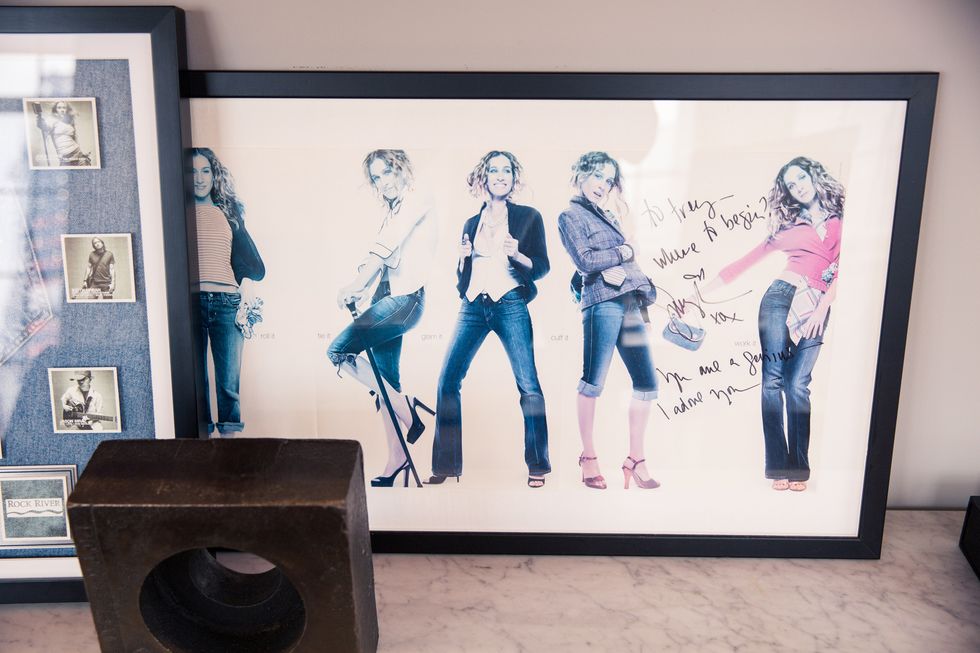
His favorite projects he’s ever worked on:
“I love that multi-year period of doing all the Gap ads, because I got to work with so many great people and all these different types of icons, whether it was Willie Nelson or Madonna or Missy Elliot. We did one TV commercial where we put them together and Missy did this new take on ‘Get Into The Groove.’ That was incredible and it came out really well.
“We did another Gap campaign where they were reintroducing the skinny black cigarette pant, and we took the original footage of Audrey Hepburn in Funny Face and started the creative in Funny Face and had her jump out into a Gap ad and do her crazy little beatnik dance. That was incredible and a pleasure to work with her son and the Hepburn estate. We set it to AC/DC’s‘Back in Black,’ so it was a great mash-up of different worlds. I love pop cultural references in that way, and to use them in different, unexpected ways.
“With Tommy, we did this great campaign that ran for almost five years. It was the ‘Hilfigers,’ the family, and this sort of quirky, eccentric family made up of all different types of backgrounds. That was really fun. It’s rare that a brand lets you do a campaign that unfolds, and we were talking about storytelling and that’s really what it was about, and it unfolded over many years. Usually in fashion it’s one season this and then next season we do something different and then on to the next thing. It’s always good to evolve, but I think sometimes people want to connect with brands and stay with something, especially now that they move so fast.”
“There’s no subject at all that you can talk about that Karl is not already an authority on, or interested in, or has just read about, or just met somebody [who is an expert]...”
About those bejeweled Stan Smiths…:
“We do all the creative for the CFDA awards every year, and Pharrell Williams got the style icon award the year before last. We were scheduled to shoot him and at the last minute he couldn’t make it. So I called Joan Smalls and asked her if she’d come and sort of ‘channel’ Pharrell and be Pharrell and she was totally into the idea. It ended up being much more interesting than shooting Pharrell anyway. It was the time when Pharrell was wearing that big Vivienne Westwood hat, so Pharrell’s stylist sent us this hat and he’d done this Adidas collab thing, so we needed the shoes he wore in it. At the Oscars, he had performed in these Swarovski crystal-embellished Stan Smiths. The team that makes those for him in Brooklyn did a quick pair in Joan’s size and sent them over the next day. It was great. So those are Joan’s Pharrell Swarovski Stan Smiths.”
How he gets past a creative block:
“Art is a big inspiration for me. Not in a literal way, of like, ‘Oh, I want to copy a painting as an image,’ but more a mood and a feeling and how it reflects our times, and just inspiration in general. Especially contemporary art, and there’s so many interesting people doing such incredible things. It can be something that’s just a feeling, something about color, or material, or photography. That’s always an incredible inspiration to me. Music also helps, sometimes I’ll hear a song and literally it’ll just all come together in my head from hearing one thing. I’ll be blocked and suddenly I’ll know exactly what I’m doing. This may sound really weird but it’s true—I think sometimes exercise works. I’ll just be in a zone of working out and all of a sudden my head can just get really clear and then I’m able to think of things maybe an hour before I just thought, I’m never going to get this. It’s going to be a disaster, or I’m the biggest failure in the world and it’s never going to happen, and then I’ll go into a class or something or a song will come on and I’ll just sort of be focused and it just all comes.”
“So I called Joan Smalls and asked her if she’d come and sort of ‘channel’ Pharrell and be Pharrell and she was totally into the idea.”
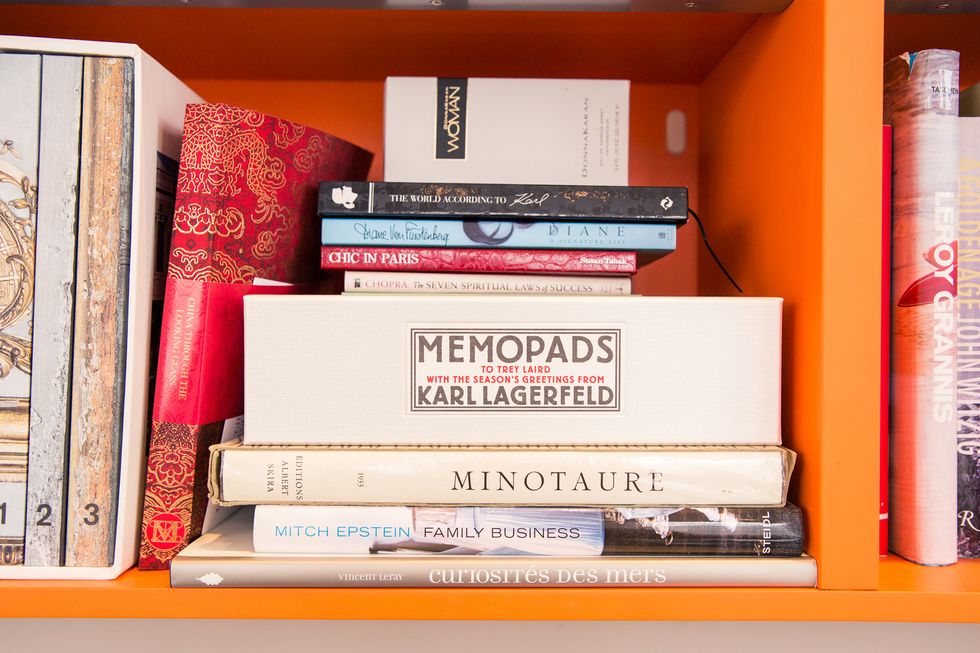
Which artists inspire him:
“I saw this amazing show in L.A. by this artist Walead Beshty. He works in different mediums. He sometimes has these glass pieces that he’ll ship in FedEx boxes and the process of what happens to the glass pieces through the shipping is part of the piece. He exhibits the glass with the FedEx box and all the labels that trace where they’ve been as part of it. I just thought that was really interesting. It was more than just the piece—it was the experience of what had happened.
“I really love Rashid Johnson’s paintings. He just had a big show at Hauser and Wirth. The way he creates depth and texture and the meaning behind a lot of his work is really interesting. There’s this incredible artist Do Ho Suh. The way he references the places he’s lived or his houses and objects and that kind of thing, it just blows me away. So I’ll look at something like that and it makes me think differently about a store or a space, a show or a set, again, not to say I want to copy Do Ho Suh, but just in terms of thinking about something dimensionally or light or transparency.
“The last thing that is just such an inspiration to me, I’m building this house in Marfa, Texas, so obviously, Donald Judd’s work has been a big influence on me and my family and my life. At the Chinati Foundation, which is Judd’s museum there, they just opened this Robert Irwin installation, this permanent Robert Irwin scrim installation, that’s incredible. Half of it’s dark and half of it’s light and you enter in the light and transition in[to] the dark, or start in the dark and transition into the light. That’s probably one of the most powerful pieces or installations I’ve seen in a long time. It had a huge impact on me, and that’s just been this year.”




